
The classical guitar is a member of the guitar family used in classical music and other styles. An acoustic wooden string instrument with strings made of gut or nylon, it is a precursor of the modern acoustic and electric guitars, both of which use metal strings. Classical guitars derive from the Spanish vihuela and gittern of the fifteenth and sixteenth century. Those instruments evolved into the seventeenth and eighteenth-century baroque guitar—and by the mid-nineteenth century, early forms of the modern classical guitar.

Flamenco, in its strictest sense, is an art form based on the various folkloric music traditions of southern Spain, developed within the gitano subculture of the region of Andalusia, but also having a historical presence in Extremadura and Murcia. In a wider sense, it is a portmanteau term used to refer to a variety of both contemporary and traditional musical styles typical of southern Spain. Flamenco is closely associated to the gitanos of the Romani ethnicity who have contributed significantly to its origination and professionalization. However, its style is uniquely Andalusian and flamenco artists have historically included Spaniards of both gitano and non-gitano heritage.

A guitarist is a person who plays the guitar. Guitarists may play a variety of guitar family instruments such as classical guitars, acoustic guitars, electric guitars, and bass guitars. Some guitarists accompany themselves on the guitar by singing or playing the harmonica, or both.

In music performances, rhythm guitar is a technique and role that performs a combination of two functions: to provide all or part of the rhythmic pulse in conjunction with other instruments from the rhythm section ; and to provide all or part of the harmony, i.e. the chords from a song's chord progression, where a chord is a group of notes played together. Therefore, the basic technique of rhythm guitar is to hold down a series of chords with the fretting hand while strumming or fingerpicking rhythmically with the other hand. More developed rhythm techniques include arpeggios, damping, riffs, chord solos, and complex strums.

A clap is the percussive sound made by striking together two flat surfaces, as in the body parts of humans or animals. Humans clap with the palms of their hands, often quickly and repeatedly to express appreciation or approval, but also in rhythm as a form of body percussion to match the sounds in music, dance, chants, hand games, and clapping games.
Rasgueado is a guitar finger strumming technique commonly associated with flamenco guitar music. It is also used in classical and other fingerstyle guitar picking techniques. The rasgueado is executed using the fingers of the strumming hand in rhythmically precise, and often rapid, strumming patterns. The important characteristic of this strumming style is the fingernail (outer) side of the finger tips is also used, and in such case, in reverse of the way it is done when the fleshy side of the finger tips is used, namely downward and upward (thumb).

Fingerstyle guitar is the technique of playing the guitar or bass guitar by plucking the strings directly with the fingertips, fingernails, or picks attached to fingers, as opposed to flatpicking. The term "fingerstyle" is something of a misnomer, since it is present in several different genres and styles of music—but mostly, because it involves a completely different technique, not just a "style" of playing, especially for the guitarist's picking/plucking hand. The term is often used synonymously with fingerpicking except in classical guitar circles, although fingerpicking can also refer to a specific tradition of folk, blues and country guitar playing in the US. The terms "fingerstyle" and "fingerpicking" also applied to similar string instruments such as the banjo.

In music, strumming is a way of playing a stringed instrument such as a guitar, ukulele, or mandolin. A strum or stroke is a sweeping action where a finger or plectrum brushes over several strings to generate sound. On most stringed instruments, strums are typically executed by a musician's designated strum hand, while the remaining hand often supports the strum hand by altering the tones and pitches of any given strum.
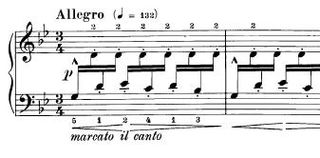
Asturias (Leyenda), named simply Leyenda by its composer, is a musical work by the Spanish composer and pianist Isaac Albéniz (1860-1909).

Clapping Music is a minimalist piece written by Steve Reich in 1972. It is written for two performers and is performed entirely by clapping.

A flamenco guitar is a guitar similar to a classical guitar but with thinner tops and less internal bracing. It usually has nylon strings, like the classical guitar, but it generally possesses a livelier, more gritty sound compared to the classical guitar. It is used in toque, the guitar-playing part of the art of flamenco.
Juana la Macarrona was a Spanish flamenco dancer (bailaora).
This is a glossary of terms that relate to flamenco arts.
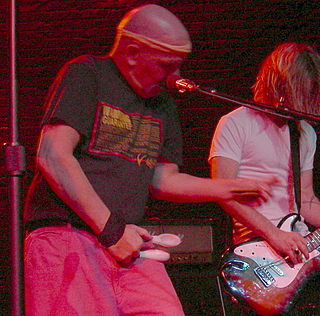
Spoons can be played as a makeshift percussion instrument, or more specifically, an idiophone related to the castanets. They are played by hitting one spoon against the other.
Body percussion may be performed on its own or as an accompaniment to music and/or dance. Examples of countries' folk traditions that incorporate body percussion include Indonesian saman, Ethiopian armpit music, palmas in flamenco, and the hambone from the United States. Body percussion is a subset of "body music".
Palmas is a handclapping style which plays an essential role in Flamenco music. It used to help punctuate and accentuate the song and dance. Good palmas can be a substitute for music, such as in the corrillo at the end of a show. Good palmistas can assist the musicians by keeping a strong tempo, or the dancer by accentuating the end or beginning of a phrase. In any case, an understanding of palos is essential.
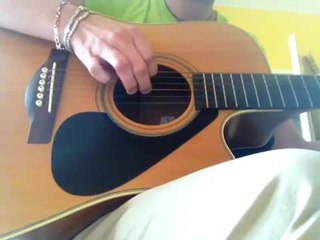
Guitar picking is a group of hand and finger techniques a guitarist uses to set guitar strings in motion to produce audible notes. These techniques involve plucking, strumming, brushing, etc. Picking can be done with:
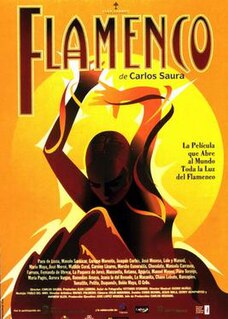
Flamenco is a 1995 Spanish documentary film directed by Carlos Saura with camerawork by cinematographer Vittorio Storaro. The film is entirely musical and dancing vignettes, composed and photographed on a sound stage.

El Jaleo is a large painting by John Singer Sargent, depicting a Spanish Gypsy dancer performing to the accompaniment of musicians. Painted in 1882, it currently hangs in the Isabella Stewart Gardner Museum in Boston.
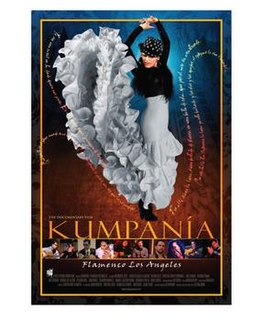
Kumpanía: Flamenco Los Angeles is a 2011 independent documentary film by director Katina Dunn. The film explores flamenco, including its origins in the oppressed Gypsy community in 17th-century southern Spain and also the flamenco culture of contemporary Spain.















